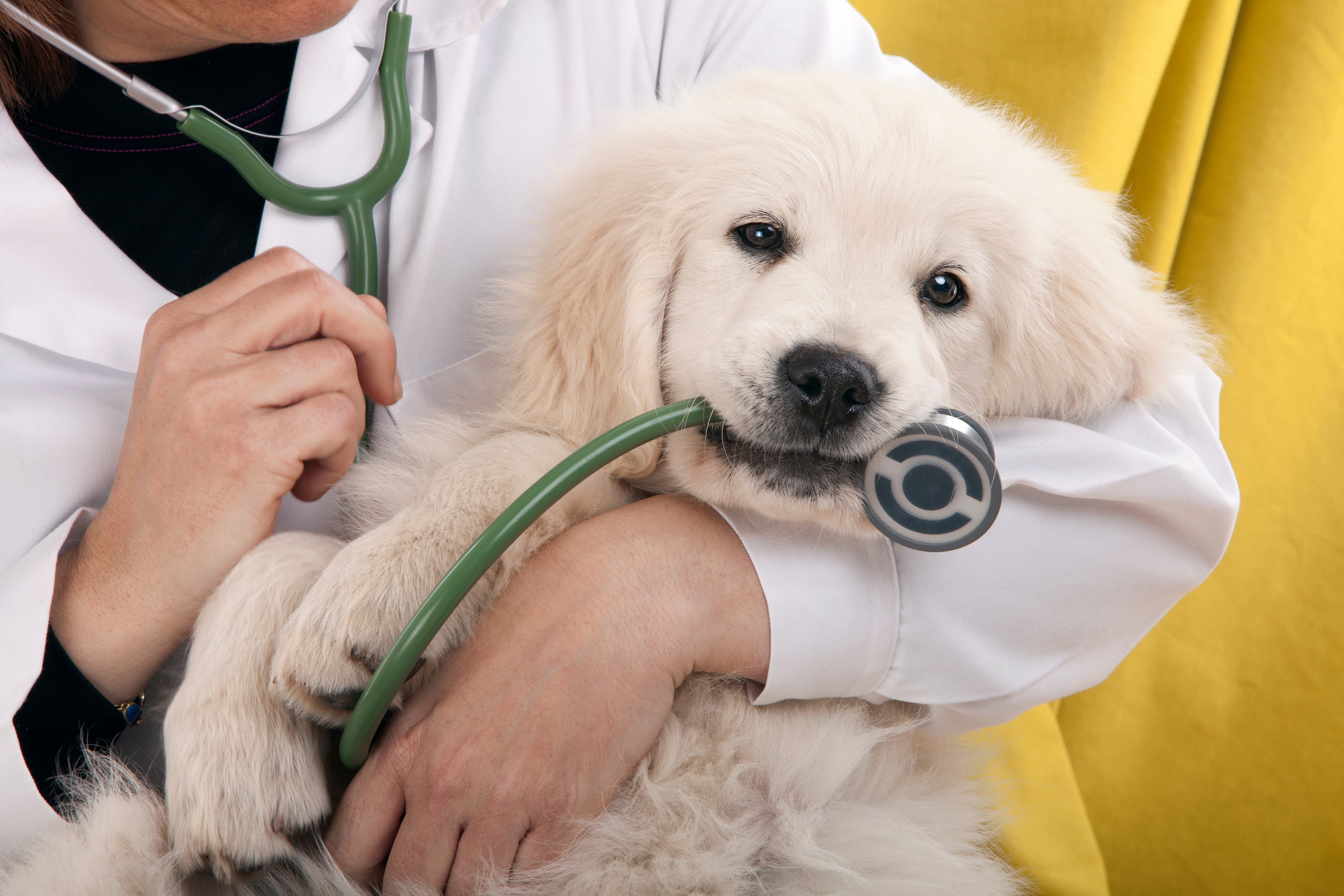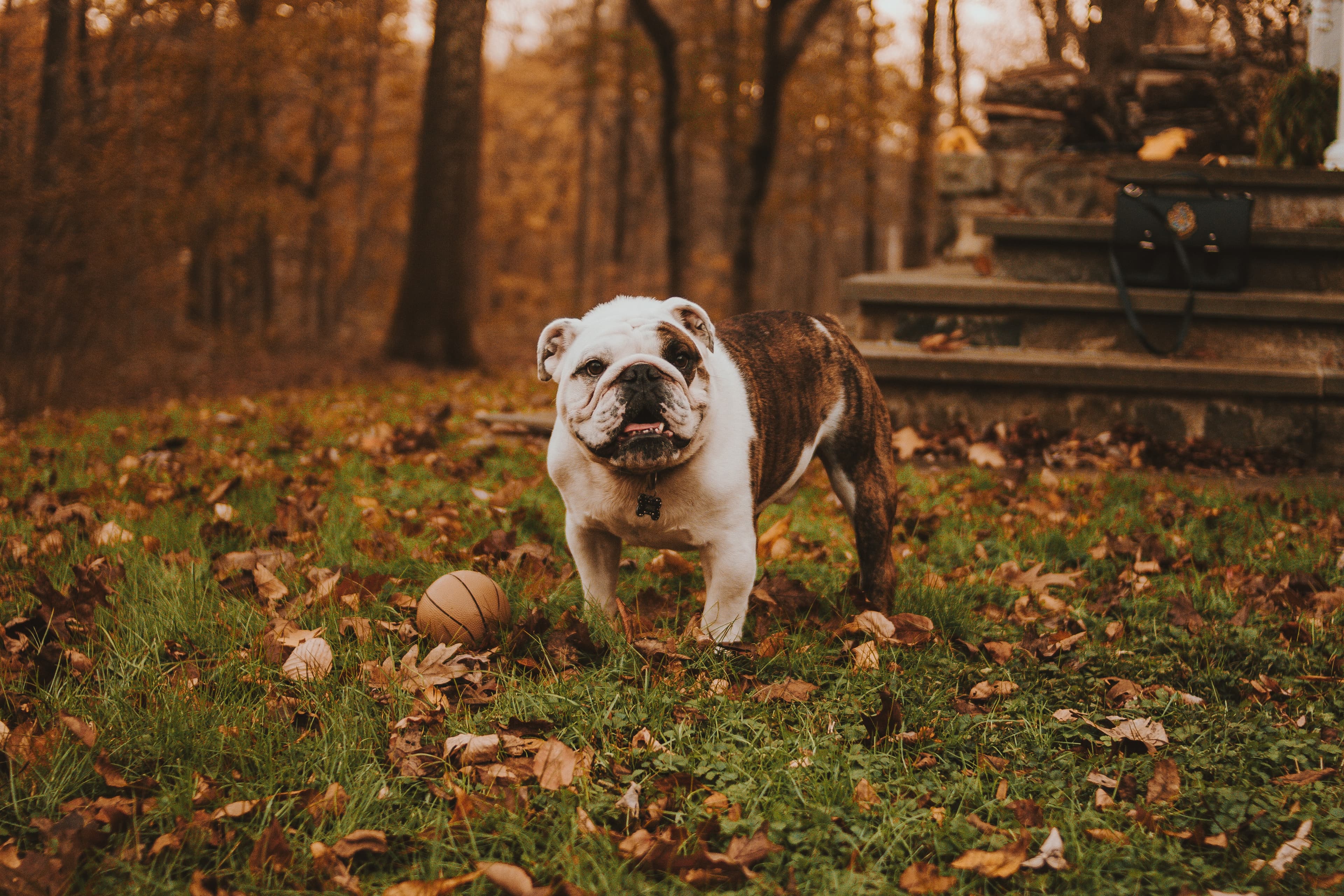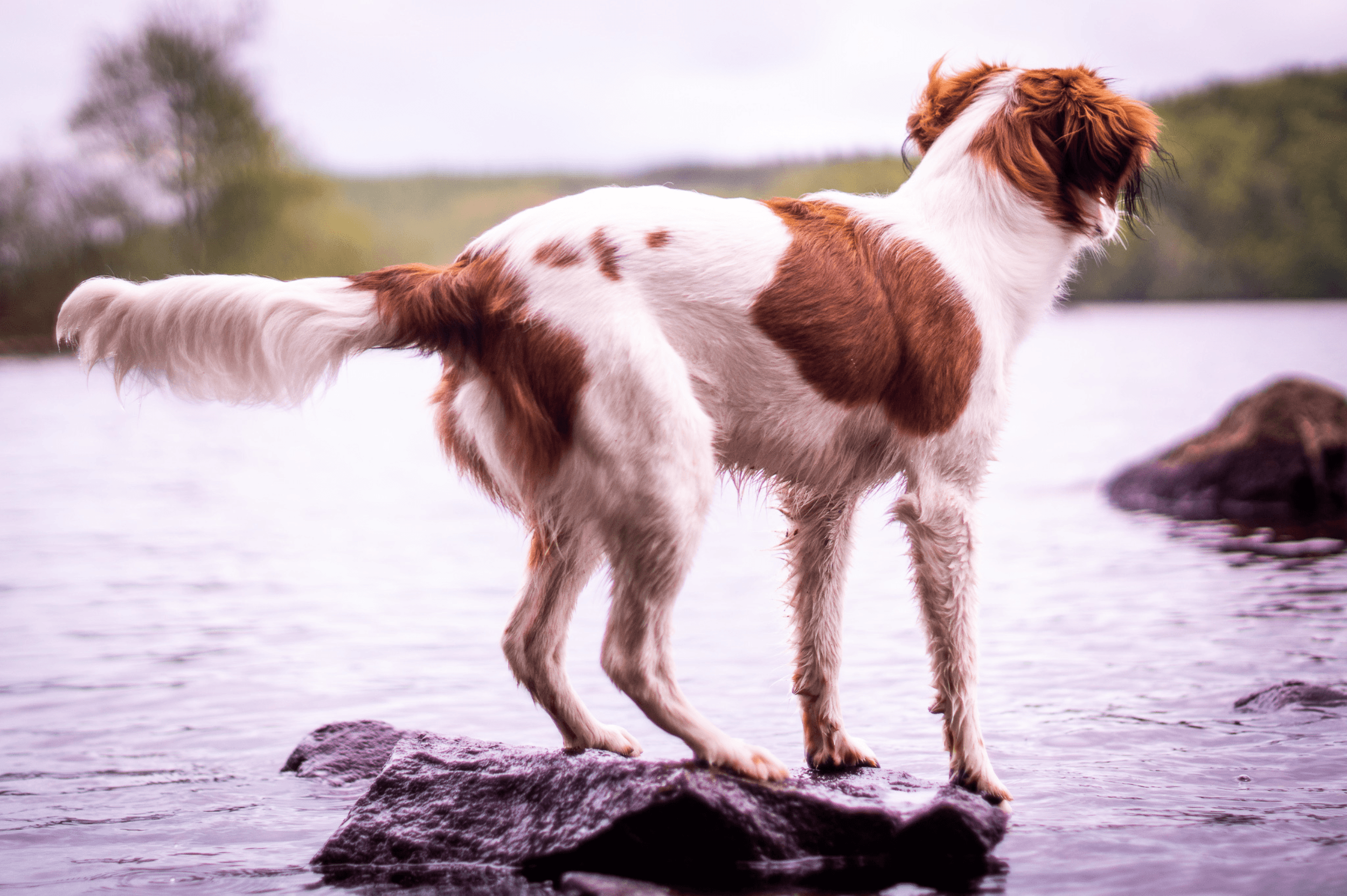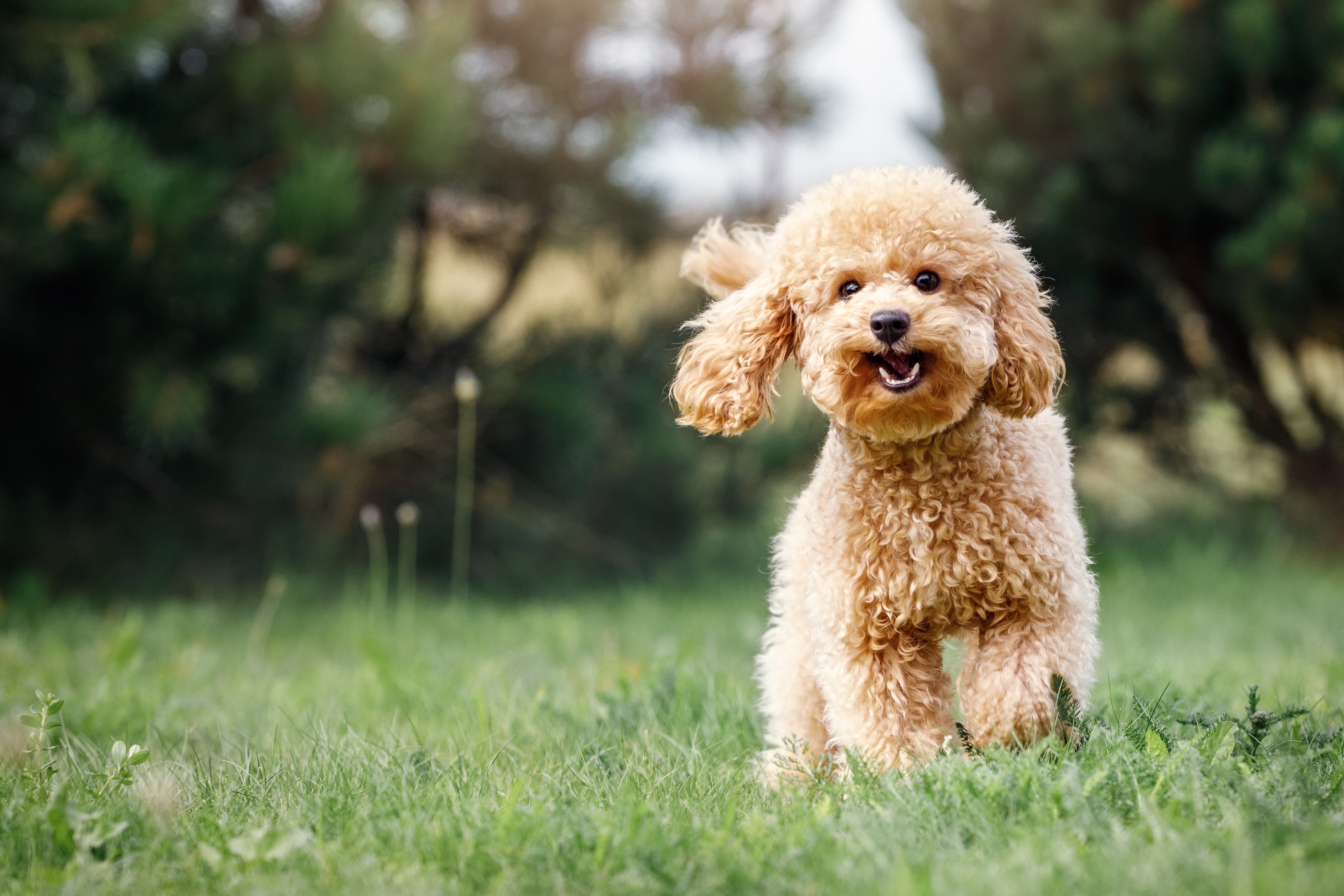How to train your dog for the vet visit
There are many steps during a veterinary visit that you can practice doing with your dog. It can be anything from stepping on the scale to taking a blood sample and everything in between. The more things you practice beforehand, the less stress and fear your dog will feel during the visit and the more pleasant it will be.
When training your dog, it's a good idea to think about the things that might happen during a visit to the vet. What kind of medical problems does your dog have, and do you need to train your dog on something specific that he doesn't like. If your dog has eye problems, for example, it is good to practice looking at the eyes and giving eye drops in a calm and pleasant way.
Some things that are always good to practice are being calm and confident in new environments, general handling and wearing a cone.
New environment
Some dogs react with stress when they enter a new environment that they are not used to. If the stress increases just by coming to the clinic, it can be difficult to perform the examination in a calm and safe way. Therefore, it is important to train your dog to be in new environments.
Since the clinic environment itself is a bit different from other places, it might be a good idea to go to your clinic and train there. You can go into the waiting room, give your dog some treats or play a game so he associates the place with something positive and go home. The next time you might try the scale and talk to the staff. Take a few positive visits before you need to visit the vet for another issue.
Getting up on things - scales and tables
Weighing the dog is often the first thing staff want your dog to do on arrival at the clinic. Research has shown that this is a step that can be very stressful for your dog. If the dog is already stressed on arrival, it's not a good start to the visit, which makes this step important to practice.
Luckily, you don't have to have a large scale at home to practice this. Train your dog to step up on all sorts of things. It could be rocks or stumps out in nature. It could be chairs or couch cushions inside, or benches in the city. If the dog learns that jumping up on things or putting his paws on things is a thing that gives rewards and is fun, the dog will be able to do this in the clinic as well.
Once you do this at the clinic, it is important that you as an owner do not avoid the scale because you then show your dog that it is dangerous. Feel free to walk next to it and reward your dog when he puts his paws on it. Do not pull your dog by the leash.
The same training applies to the examination table. Practice jumping up on things at home and outside. You can also talk to your clinic if it's ok to come there and practice on a table. Often the clinic is positive about it.
The examination
At the vet's, the dog will undergo an examination. This often involves the vet looking into the dog's eyes, mouth, squeezing the abdomen, touching the legs and paws and listening to the heart. For specific problems such as lameness or ear problems, those specific areas will of course be examined more thoroughly.
To practice this, it's important to start in a calm way and constantly follow the dog's movements. If the dog doesn't even want to be reasonably still on a table or on the floor, that's what you need to start practicing. You can touch the different parts of the body and then reward with a treat. If you notice that there is some part of the body that the dog finds more uncomfortable, it is important to train a little extra there, but it is important not to go beyond the dog's limits so that it becomes afraid or uncomfortable, as you then risk that the dog becomes more difficult to examine. It's also important to practice having people other than you touch the dog, as the veterinarian will do this during the visit.
When it comes to looking in the eyes and mouth, it can be a little uncomfortable as the dog's head is held a little and the veterinarian sometimes wants to open the mouth, so it can be good to practice this as well. Remember to take it in small steps and stop if the dog shows discomfort.
Taking the temperature is also often part of the examination. This can be difficult to practice at home in a good way, but it is possible to practice easily holding the dog still and lifting the tail. It is also good to take your dog's temperature at home so that you know approximately what your own dog's normal temperature is.
Strange objects
During the examination, the dog will be examined with various objects that are strange to the dog. This could be the chip reader, which should be stroked over the neck and beeps when it finds the chip, or the stethoscope, which is slightly cold and should be pressed against the chest. This is also a good thing to practice at home. You don't need to have a chip reader or stethoscope to practice this, but use your phone as a chip reader and a spoon or something else as a stethoscope.
Approach the object slowly, let the dog sniff it if it wants to, and place it gently against the body part in question. Reward with a treat when you're done.
Blood tests
A blood sample is often taken to rule out certain diseases. The blood sample is often taken on the front legs or neck. This can be difficult to practice at home, but what you can practice is to hold the dog, the sound of the shaver, to put the stasis around the elbow and to wet a piece of the leg.
For a blood test, the dog needs to stay still for a long time. This is good to practice this. The most important thing to remember is not to hold too tight as it usually gets worse the harder you hold. It can be good to keep one hand softly around the dog's body and one softly under the chin. Also, remember to practice this on a table with the dog facing away from you as this is often how a blood sampling looks like. Don't forget to practice for short periods of time so your dog doesn't get bored and reward when your dog is still.
Some dogs react very strongly to the sound of the shaver, so it's a good idea to train this. You can do this just by turning on one you have at home, or pulling up a sound on your phone. Start by turning it on far away from the dog so it can get used to the sound. When you turn it off, reward the dog with a treat as it can associate the sound with treats and get a positive expectation when it hears the sound.
To take a blood sample, you need to stasis the paw a little. This is done by clamping a rubber hose above the elbow. This can be practiced with a regular hair tie or a rubber band. It is important not to tighten it too much, but thread the cord over the paw like a large ring and pull it a little to the side when it is at the top of the paw. Do not twist it several times around the paw. Here too, we train at the dog's pace and are careful that it does not find it unpleasant, and of course we reward the dog for participating in the training.
The last step before sticking for a blood sample is to wet the area. This can be practiced just by soaking a piece of cotton or paper towel with water and dragging it along the front of the leg and rewarding afterwards.
X-rays
Some medical conditions require an X-ray. How your dog should be positioned depends on where the problem is, but often they lie on their side and back. This can be good to practice as it is often a difficult position for the dog and the procedure requires the dog to be still in order to get the best possible images.
You can train your dog to lie flat on its side by luring it from a lying position. Reward liberally and be sure to train on both sides as the dog tends to have a preferred side. Lying on your back can be a little trickier. Here we need to come in and help as it is downright impossible for many dogs to lie completely straight on the spine on a hard surface. We can help the dog up on its back and train it to lie straight. Make sure not to go too fast and that the dog does not find it uncomfortable, as you then risk making it even more difficult for the dog during the visit.
The cone
If your dog has undergone a procedure at the vet's, they often have a cone put on them to prevent them from licking the exposed area. This is something that can be very difficult if you have not practiced it before. You can practice this by having the dog put its head in the cone itself. You can start with a cone made of paper, cardboard or similar and reward the dog inside the cone when it curiously sticks its head in. The next step is to train the dog to wear the cone for a longer period of time.
An important thing to keep in mind after the visit if your dog is wearing a cone is that you may need to take it off for the dog to eat, drink or go for a walk.
Muzzle
Even if you think your dog will never need a muzzle, it can be a good idea to train it. There may come a time when your dog needs to wear one, and it's an advantage if it doesn't add stress. Dogs that are in pain can bite because of it and when sedated, it is often the practice that the dog should have a muzzle as they are not aware of what they are doing.
You can train this in almost the same way as the cone. You let the dog put its nose in it yourself and reward the dog for it. Then extend the time the dog can have its nose in the muzzle before you close it. Train in small steps and without discomfort.
Why is it important to train on the visit?
You may think it's unnecessary to train for something that happens maybe once a year or more rarely, but you can see that just one veterinary visit that is perceived negatively can have a huge impact on the dog and cause lifelong fears. A positive side effect of training is also that it strengthens your relationship with your dog. And it's fun!






